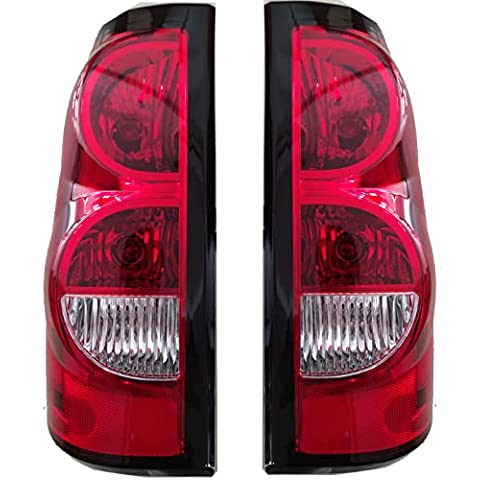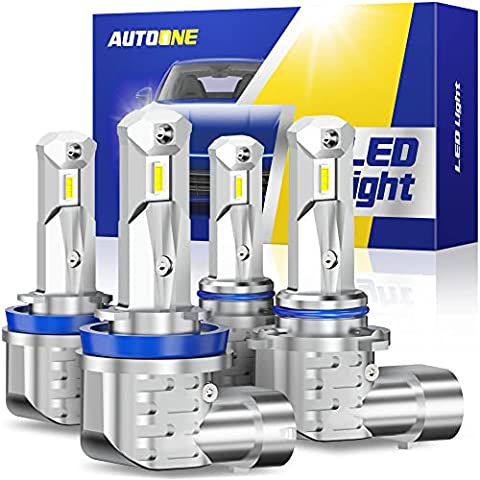Do LED headlight bulbs run hotter than halogen bulbs?
At Halo-Headlights.com, we understand that the temperature performance of LED headlight bulbs compared to traditional halogen bulbs is a primary concern for many of our customers. To address these concerns, we’ve conducted thorough thermal testing using a precision heat sensor, monitoring the temperature after 30 minutes of operation.



Car Headlight Bulb H7 Led H4 H11 9005 HB3 9006 HB4 9012 HIR2 Fog Light 6500K 50W

3 Pack 4800LM High Power 270W Super White 6000K Headlight LED Light Bulbs Replac

The standard 55w halogen bulb, often seen in numerous vehicles, was recorded at an average temperature of 150°F, serving as our baseline for comparison. Now, let’s dive into the results of the LED bulbs we tested:
- Oracle 4000LM LED Bulbs averaged 184°F, which is about 20% hotter than the halogen standard.
- GTR Lighting‘s GEN 3 Ultra Series LEDs came in at an average of 171°F, approximately 15% above the halogen bulb’s heat output.
- Putco Silver-Lux LED Bulbs displayed temperatures up to 143°F, with an impressive average of just 116°F.
- Street Glow XHP Series LEDs stood out with an average temperature of only 93°F.
During our testing, we found that the Philips 55w halogen bulb reached temperatures of 155°F at the rear and up to 161°F at the front. These temperatures challenged our assumptions about the durability and heat resistance of headlight materials.
As for the LED contenders:
- Oracle 4000LM LED Bulbs demonstrated significant rear heat at 189°F but maintained a cooler front temperature of 91°F, showcasing an interesting distribution of heat dissipation.
- GTR Lighting’s GEN 3 Ultra Series pushed the envelope with the heat sink reaching 207°F, yet the front side remained relatively cool at 88°F. This speaks to the efficiency of their heat management design.
- Putco Silver-Lux LED Bulbs showed a balanced cooling performance with a back side temperature of 144°F and a front side temperature of a mere 77°F.
- Street Glow XHP Series, featuring a fan-based cooling system, maintained the coolest backside temperature at 113°F and a front-side temperature that did not exceed 76°F.
Summing it up
- Halogen bulbs can reach unexpectedly high temperatures during normal operation.
- Fan-based cooling systems in LEDs are still very effective, even if other trade-offs exist.
- The brightest LED options tend to produce the most heat.
- However, even the hottest LEDs tested do not pose a risk of heat damage to headlight assemblies.
- LED technology is advancing rapidly, leading to exciting developments and improvements in efficiency.
Our findings underscore the advancements in LED technology, providing cooler operation without compromising brightness or reliability. While some LEDs operate at higher temperatures than halogens, the improved heat management strategies ensure they remain within safe operational limits.
We will continue to monitor and test the latest products, ensuring our customers have access to the most current and comprehensive information regarding LED headlight technology.
Why this test is useful?
The question of whether LED headlight bulbs run hotter than their halogen counterparts is a significant one for vehicle owners, enthusiasts, and industry professionals alike. This curiosity stems from a practical concern: the longevity and safety of vehicle headlight assemblies. Excessive heat can potentially damage the headlight housing, connectors, and surrounding components, leading to costly repairs and safety hazards on the road. Moreover, the heat dissipation characteristics of a bulb can influence its lifespan, performance, and overall reliability. By understanding the thermal properties of different types of bulbs, consumers can make informed decisions about which lighting technology will provide the best balance of brightness, durability, and safety for their specific needs.
Measuring the temperature of headlight bulbs under consistent operating conditions is essential to provide concrete data rather than anecdotal evidence. This kind of testing yields insights into the thermal management of various bulb designs, allowing for comparisons that can guide technological improvements and inform consumer choice. Manufacturers can utilize this data to optimize heat sinks and other cooling mechanisms, while consumers benefit from a transparent understanding of how their headlight choices may impact their vehicle’s performance. Ultimately, such temperature benchmarks can help prevent overheating issues, extend the life of headlight components, and ensure that vehicles operate safely with optimal visibility at night or during adverse weather conditions.
 Steven is a certified mechanic and technical writer at Halo Headlights. Steven is excited about fast cars, loud music, and car mods. On a yearly basis, he visits SEMA, as well as other car shows.
Steven is a certified mechanic and technical writer at Halo Headlights. Steven is excited about fast cars, loud music, and car mods. On a yearly basis, he visits SEMA, as well as other car shows.
He has installed thousands of HID and LED kits and done hundreds of custom headlight retrofit projects. Now, he is ready to share his experience with Halo-Headlights.com readers.










